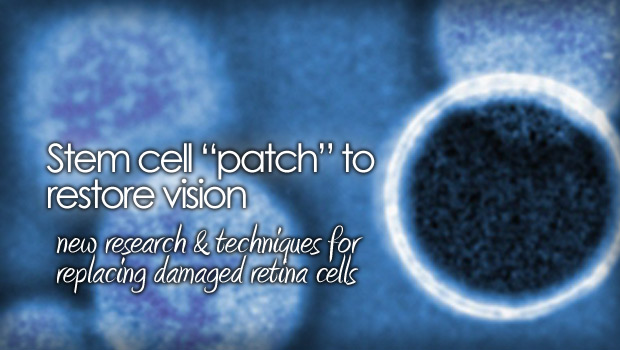Stem cell replacement restores vision
Researchers at University of Wisconsin School of Medicine are developing a retinal stem cell replacement “patch” that may restore vision […]


Stem cell replacement restores vision
Researchers at University of Wisconsin School of Medicine are developing a retinal stem cell replacement “patch” that may restore vision […]
Researchers at University of Wisconsin School of Medicine are developing a retinal stem cell replacement “patch” that may restore vision to patients with diseases like macular degeneration and retinitis pigmentosa.
Dr. David Gamm, director of the McPherson Eye Research Institute and Associate Professor of Ophthalmology at the UW School of Medicine and Public Health, is a pioneer in retinal stem cell research. Dr. Gamm has teamed up with researchers at UW to begin development of a two-layered “patch” of pluripotent stem cells.
Pluripotent is a term that describes a type of stem cell that has the ability to differentiate into any of three different cell types. This is important, since the targeted retinal diseases involve damage to both photoreceptors and retinal pigment epithelium (RPE) cells.
There are many retinal diseases that involve the loss of photoreceptor and RPE cells. Damage to these most important layers of the retina leaves the patient with blurry, distorted, dark or even missing vision.
The tiny patch of stem cells being developed has a pre-formed structure that resembles the natural order and layers of retina cells. The thin membrane of cells is held together by a biodegradable gel.
During vitreo-retina surgery, this tiny patch is implanted underneath the top layers of the retina and theoretically, the special stem cells should arrange themselves into the natural cell structure that will restore vision.
RPE and photoreceptor cell transplants have been attempted and failed before. In past attempts, the retina and its hostile, diseased environment rejected the implanted cells. But recently having success with turning blood and skin cells into induced pluripotent stem cells, then coaxing them to become retina cells, Dr. Gamm is confident that this latest research will have a different outcome.
It is important to remember that this possible future treatment is in its earliest stages of development. A clinical trial on human patients has not yet been planned, but it will be a big step forward, once the necessary lab research is completed and approved.
Stay tuned to www.MaculaCenter.com for further updates on the quickly growing and numerous stem cell therapy investigations.







